8.8 /10 1 Votes8.8
9/10 GameSpot Artist(s) Mark Stevenson | 4.5/5 Emuparadise 4.2/5 Complete ROMS Director(s) George Andreas Programmer(s) Chris Sutherland Initial release date 1999 | |||||||||||||||||||||||||||||||||
 | ||||||||||||||||||||||||||||||||||
Release date(s) NA: November 22, 1999EU: December 3, 1999 Genres Platform game, Adventure game Similar Donkey Kong games, Nintendo games, Platform games | ||||||||||||||||||||||||||||||||||
Bad game design donkey kong 64
Donkey Kong 64 is a 1999 adventure platform video game for the Nintendo 64 console, and the first in the Donkey Kong series to feature 3D gameplay. As the gorilla Donkey Kong, the player explores the themed levels of an island to collect items and rescue his kidnapped friends from K. Rool. The player completes minigames and puzzles as five playable Kong characters—each with its own special abilities—to receive bananas and other collectibles. In a separate multiplayer mode, up to four players can compete in deathmatch and last man standing games.
Contents
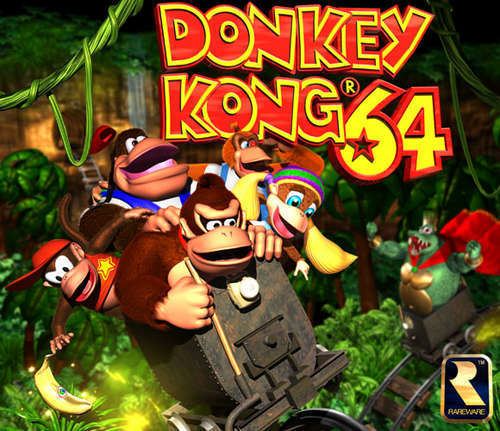
Rare, who had previously developed the Donkey Kong Country games, began development on the 3D Donkey Kong in 1997. A 16-person team, with many members recruited from Rare's Banjo group, finished the game in 1999, when it was published by Nintendo for North America in November and worldwide by December. It was the first game to require the Nintendo 64 console's Expansion Pak, an accessory that added memory resources. The game had an exceptionally large marketing budget that included advertisements, sweepstakes, and a national tour.
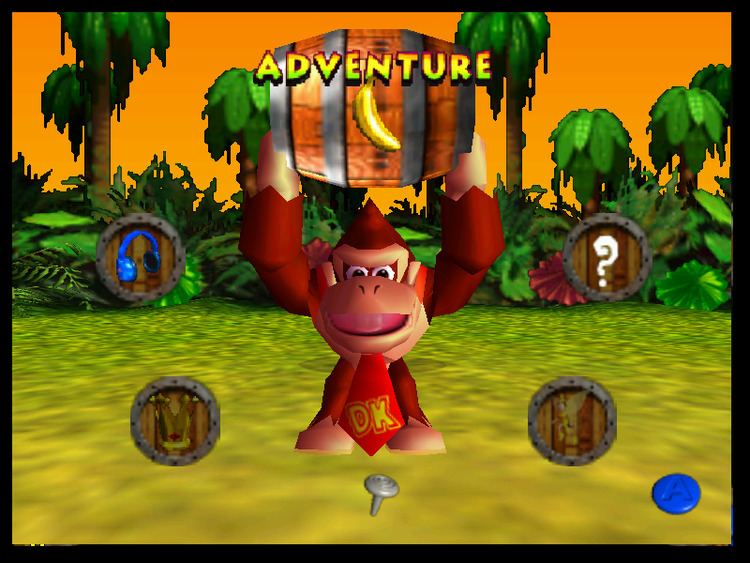
The game received universal acclaim from reviewers and was Nintendo's top seller during the 1999 holiday season, with 2.3 million units sold by 2004. It won the 1999 E3 Game Critics award for Best Platform Game, and multiple awards and nominations from games magazines. Reviewers noted the game's exceptional size and length, and criticized its emphasis on item collection and backtracking. Some cited its similarity to its Rare's 1998 predecessor, Banjo-Kazooie, both in gameplay and visuals and despite Donkey Kong 64's mandatory memory add-on. The game's camera controls also frustrated reviewers. Critics felt that the game did not meet the revolutionary potential of Donkey Kong Country but remained among the best 3D platform games on the console.
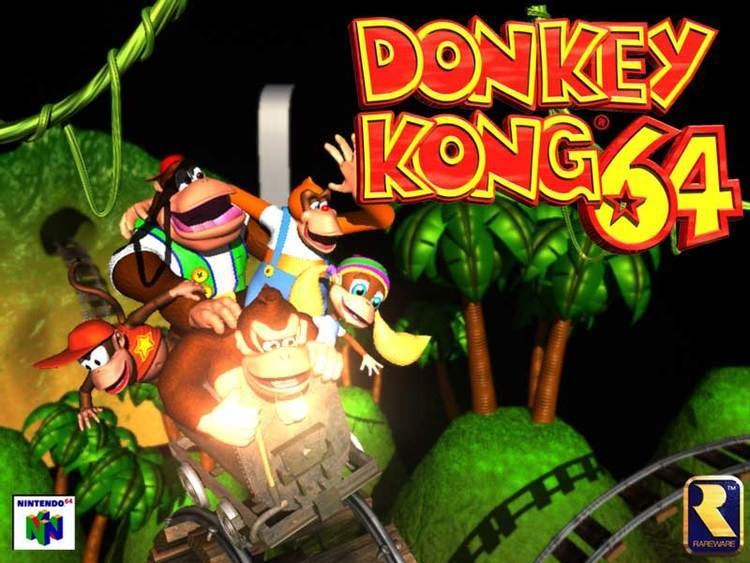
Donkey Kong 64 is remembered as the emblematic example of Rare's "collect-a-thon" adventure platformers. Retrospective reviewers did not recommend the game for the tedium of its collection tasks. A rap song from the game's introductory sequence—the DK Rap—is often cited as among the worst songs to feature in a video game. The title was later released on Nintendo's Wii U Virtual Console in 2015.
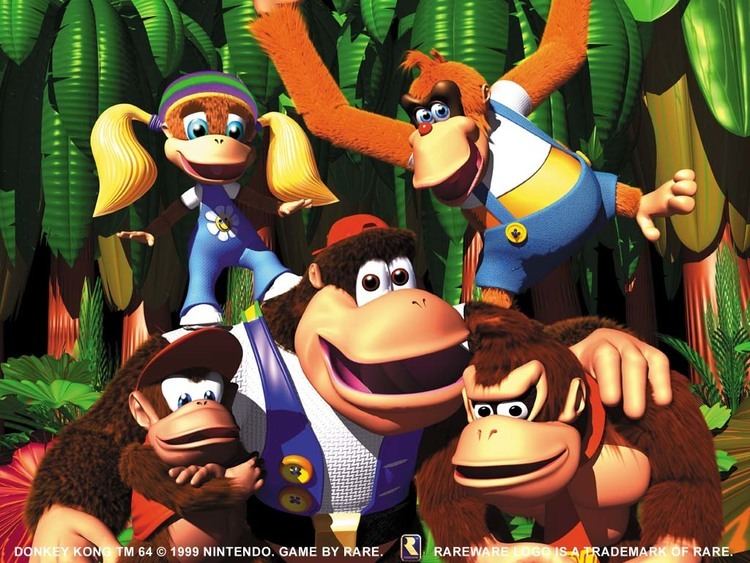
Gameplay
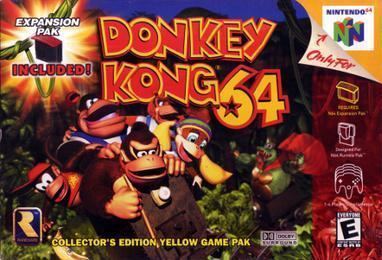
Donkey Kong 64 is a 3D platforming adventure game in which the player, as Donkey Kong and his friends, explores an island and collects items to progress through minigames and puzzles. The game follows a traditional storyline for the series: King K. Rool and his reptilian Kremlings invade Donkey Kong's idyllic island and kidnap his friends. After a tutorial, the player embarks as Donkey Kong to rescue them by reclaiming enough bananas to face their kidnapper. The player is rewarded with bananas for exploring the in-game world and completing puzzle minigames. Bananas let the player access boss fights, which, in turn, unlock new in-game worlds. Most of the game's puzzles are simple, and involve rearranging items, manipulating switches and tiles, and Concentration-style matching games. Minigames include races, minecart rides, and barrels that shoot the characters as projectiles. There are five such banana-rewarding objectives for each of five playable characters across eight themed worlds—200 goals in total—and connected by an overworld. Unlike prior, linear Donkey Kong games, the objectives can be completed in any order. The player can fast travel between sections of the level with designated warp pads, and can swap between characters in designated swap barrels. The player also collects banana coins, which unlock new weapons and abilities, and other collectibles such as weapon ammunition and blueprint puzzle pieces. Similar to gameplay in other games by the developer, the player often encounters an impossible situation (e.g., indestructible object or an out-of-reach area) and must eventually backtrack to resolve the impasse after acquiring a new ability.
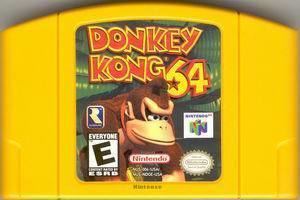
Donkey Kong's kidnapped friends become playable characters after the player rescues them. Each of the five characters begin with basic abilities and receive additional, unique abilities as the game progresses, such that a specific character ability might be necessary for solving a puzzle. For example, only Donkey Kong can smash dirt for banana coins, only Chunky Kong can lift rocks, only Tiny Kong can crawl through holes, only Diddy Kong can fly, and only Lanky Kong can float. The characters are also unique in the projectiles they shoot and the musical instruments they play. For example, some doors can only be opened with Donkey Kong's coconut projectiles and others can only be opened with Diddy Kong's guitar. Since these abilities outnumber the quantity of face buttons on the controller, some are only accessible when the player presses a button combination. These modes include alternative camera angles, a sniper mode, and a snapshot mode, which unlocks more in-game secrets. Playable versions of the 1981 Donkey Kong and 1983 Jetpac are hidden within the game. The player-character can also ride animals, such as a rhino and swordfish, who recur from earlier series games. Optional hardware support includes a widescreen mode and Rumble Pak compatibility.
Donkey Kong 64 features a separate multiplayer mode with six minigames for two to four players. Monkey Smash is a open arena, deathmatch-style minigame in which up to four players find ammo and use their respective projectile weapons from the single-player game to damage other players before losing all of their own lives. Battle Arena is a king-of-the-hill minigame in which players use weapons and explosives to knock each other off the edge of a platform. Each mode has several sub-types in which players can compete based on time or score.
Development
Following their success with the Donkey Kong Country games in the mid-1990s, developer Rare built their next Donkey Kong series game upon its predecessors' gameplay but not as a direct sequel. Rare's Gregg Mayles led the effort to create the 3D Donkey Kong. Development began in 1997 for release on the Nintendo 64's disk drive add-on, but was transitioned for release on the base console after the add-on was delayed and eventually canceled. A team of 16 people worked on the title, and an additional eight members assisted in its later stages. Donkey Kong 64 was built atop the game engine used in Banjo-Kazooie, and as the Banjo project died down with Banjo-Tooie, staff members joined the Donkey Kong 64 team. Rare announced Donkey Kong 64 with a single screenshot on its website and coverage in the January 1999 issue of Nintendo Power. Electronic Gaming Monthly wrote that the game was playable by the 1997 Electronic Entertainment Expo, though IGN said that the game debuted at the 1999 event. The game also demoed at Nintendo's 1999 Spaceworld. Donkey Kong 64 was expected to be a bestseller, as the console's "crowning achievement" in graphics and sound.
Donkey Kong 64 was the first of two games to require the Nintendo 64's Expansion Pak: a console memory upgrade that shipped with the game. The upgrade was previously used to power optional, high-resolution textures, but in the case of Donkey Kong 64, it was marketed as improving the game's frame rate and rendering of objects at a distance. However, according to Rare programmer Chris Marlow, the company could not resolve a bug that occurred without the Expansion Pak and thus they were forced, at great expense, to bundle the game with the memory upgrade. Additionally, Nintendo said that the choice to bundle, rather than selling the accessory separately, would avoid consumer confusion. Rare and Nintendo released the game in North America in November 1999, and a worldwide release followed the next month. Accompanying the game's launch, Nintendo offered a special bundle of the game and console, including the game's banana-colored cartridge, its required Expansion Pak, and a transparent, green "Jolly Rancher-style" Nintendo 64 console. Donkey Kong 64 had little holiday season competition from Nintendo, as the company had moved its other releases including Mario Party 2, Perfect Dark, and Pokémon Stadium into the next year.
Grant Kirkhope composed the game's soundtrack, placing it closer to the tradition of Banjo-Kazooie than to that of David Wise's Donkey Kong Country soundtracks. The DK Rap, which introduces the game's character abilities at its outset, was conceived and written by George Andreas, scored and recorded by Kirkhope, and performed by Andreas and Chris Sutherland. It was designed to be lighthearted despite being interpreted as a "serious" songwriting attempt at the game's launch. Nintendo of America ran a DK Rap contest in which fans record their own version of the rap to win prizes including a trip to the company's Redmond headquarters.
The game had a sizable US$22 million marketing campaign, about double the typical budget for a major Nintendo release. The campaign included a 60-second commercial played at over 10,000 movie theaters during the holiday season, and additional advertisements shown on billboards, in print, and over radio. A promotional "The Beast Is Back" tour brought a truck outfitted with Nintendo games across the United States, and a separate sweepstakes between the series and Dr. Pepper soda advertised in supermarkets. Nintendo sought to sell four million copies of the game (1.5 million more than Nintendo sold copies of The Legend of Zelda: Ocarina of Time), including a million of the translucent green Nintendo 64 bundles. Polled retailers expected Donkey Kong 64 to be the top console game sold during the 1999 holiday season.
Donkey Kong 64 later became available in emulation on Nintendo's Wii U Virtual Console in April 2015, after not receiving a release for the Wii Virtual Console. It was among the first Nintendo 64 re-releases for the Wii U Virtual Console.
Reception
The game received "universal acclaim", according to video game review aggregator Metacritic. It was Nintendo 64's top seller during the 1999 holiday season and Nintendo's chief defense against the introduction of the new Sega Dreamcast console. As a bestseller, it joined Nintendo's "Player's Choice" game selection, where it continued to sell well through the next year's holiday season. By 2004, Donkey Kong 64 had sold over 2.3 million units. It won the 1999 E3 Game Critics award for Best Platform Game, and several annual awards from Nintendo Power, including best overall game of 1999. It was additionally nominated for Game of the Year and Console Game of the Year in the Academy of Interactive Arts & Sciences' 2000 Interactive Achievement Awards. GamePro named the game an "Editor's Choice". IGN described Donkey Kong 64 as the biggest and most ambitious title on the Nintendo 64 as of its release, but very similar to Banjo-Kazooie in its platforming and puzzle design. Similarities between the two games and their themes was a common refrain among reviewers.
Reviewers criticized or had little praise for the game's emphasis on collecting items and backtracking—"an interactive egg hunt". This had become a trend in the developer's games, and Donkey Kong 64 followed the "predictable formula" of making players collect multiple sets of items and those sets in full for a special ending. Next Generation also saw the developer creating a habit of backtracking in their games. GameSpot was more diplomatic: those who liked collecting items would be titillated by its replay value, and those who did not would be frustrated by its chores. The puzzles and minigames are fun the first time through, according to EGM, but they quickly become worn when replayed with increasingly tighter time restrictions. GameSpot, however, considered parts of Donkey Kong 64's gameplay "cerebral" in how the player had to consider several simultaneous tasks to solve later puzzles. Already familiar with the game's concepts borrowed from Super Mario 64, Ocarina of Time, and Banjo-Kazooie, reviewers considered the game's tasks less innovative or interesting to decipher. In retrospective reviews, Nintendo Life forthrightly called the amount of objects to collect "excessive" and repetitive. Backtracking, for instance, could be reduced by letting the player switch between characters at any time.
Reviewers noted the game's size and length. With an estimated 30 hours in basic gameplay, IGN called it Rare's War and Peace. "Big" is an understatement, wrote GameFan, "the adventure found within is mastodonic". Reviewers became frequently lost or distracted in its world. Critics highlighted the ingenuity of the boss battles, in particular the final battle against K. Rool, though EGM found the story's ending to be lackluster. While critics found the multiplayer's entertainment limited, they considered the gameplay variety between the five characters to be a strength. But between a slow movement speed and camera issues, the controls also frustrated reviewers. For example, characters who do not move during their attacks become vulnerable to encroaching enemies. Edge wrote that the lack of camera improvements over Banjo-Kazooie was inexcusable.
Despite the game's expanded memory resources, reviewers felt that the game's visuals were only marginally—if at all—better than its contemporaries, such as the previous year's Banjo-Kazooie. In fact, IGN felt that Donkey Kong 64 was not as pretty as Banjo-Kazooie, especially in its water and backgrounds, though it still ranked among the console's prettiest games. The setting is barren and nondescript at first, and only later introduces lighting effects and richer textures. IGN hoped for more from Rare, and while its reviewer praised the game's particle effects (e.g., in the desert wind), he considered the game's dynamic lighting overused. N64 Magazine said that the enhanced effects were most often used for decoration, though they also played some role in puzzles based on illuminating paths. Reviewers noted graphical difficulties even with the extra memory, such as frame rate slowdowns and distant features not appearing in any detail, though overall they considered the added graphical flourishes commendable. GameSpot also saw a lack of variety in the game's environment.
The characters have Rare's emblematic humor, and reviewers praised their individual personalities. Several reviewers noted the degree to which the character personalities showed in their animations. IGN considered Donkey Kong 64's characters less baffling than those of other Rare titles, and sometimes funny. GameFan found the characters to be tools, in that the addition of the three new playable character to the series offered little personality that would be missed.
IGN felt that the game's music was not as clever as Banjo-Kazooie's, though it still delivered a variety of moods. GameSpot was impressed with aural clues in the game's surround sound and by the quality of the underwater effects. Nintendo Life wrote that Grant Kirkhope's soundtrack fit the setting. Reviewers criticized the game's opening DK Rap. N64 Magazine called it "embarrassing" and IGN placed it among the worst music to feature in a game. GamePro, however, thought it was humorous albeit lowbrow. Eight years later, Nintendo Life said the song was "loved by some, loathed by others", similar to the game itself.
Reviewers concluded that the game lacked the revolutionary potential of Donkey Kong Country but was of a sufficient high quality to sell well during the holiday season. "The 3D platform genre doesn't evolve with Donkey Kong 64", AllGame wrote. While hyped fans would be disappointed, IGN wrote that Donkey Kong 64 remains an excellent and expansive platformer with an overwhelming amount of things to do. GameFan, on the other hand, was most disappointed by how the game "truly offers nothing new" and compared its monotony and repetition with Eyes Wide Shut: "a big bloated project with not enough brilliant moments to justify the numbness ... [of] sitting through the whole thing". The game, the reviewer continued, "fails to live up to the Rare name". Donkey Kong 64's 3D platforming was commonplace by the time of its release and, according to GameSpot, would have fared better as a Nintendo 64 launch title. With its competition considered, Daily Radar wrote that Donkey Kong 64 was simply the best 3D platform game on the console. Edge qualified this thought: Donkey Kong 64 was the closest any third-party developer had come to outdoing Nintendo's mastery of game structure, but its gameplay was derivative and unimaginative compared to the freedom and flexibility of Nintendo's Super Mario 64. Nevertheless, the 3D Donkey Kong was "a fine effort ... in its own right".
Legacy
Rare's 3D platformers became "notorious" for their emphasis on collecting items, and Kotaku remembered Donkey Kong 64 as "the worst offender" with hundreds of color-coded bananas. The indie developer behind A Hat in Time, a spiritual successor to Banjo-Kazooie, also blamed Donkey Kong 64 in particular for the "collect-a-thon platform adventurer" genre's decline in popularity. For this element in particular, retrospective reviewers did not recommend the game in context of the rest of the series. "As ... Super Mario 64 breathed life into the 3D platforming genre", Electronic Gaming Monthly wrote, "Donkey Kong 64 sucked it all out" and solidified Rare's reputation for making "collect-a-thon" games.
Retro Gamer and Game Informer both remembered the game's reception as "mixed", in consideration of its similarities with Banjo-Kazooie and lack of genre-pushing changes. The Nintendo 64 was approaching the end of its lifecycle, Electronic Gaming Monthly noted at the game's launch, as gamers turned their sights to the Sega Dreamcast and Sony PlayStation 2. IGN later named Donkey Kong 64 as a title worthy of being remade for Nintendo's 3DS handheld console.
The DK Rap is remembered for its negative reception. Renditions of the song later appeared in Super Smash Bros. Melee and Donkey Konga. Over a decade after the game's release, its composer said that the rap was enjoying a resurgence in popularity despite its initial unpopularity.
